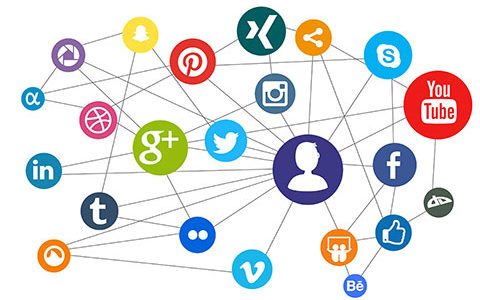The scenario was familiar, as it was one I had repeated dozens of times during the past two years. I was driving my twin 13-year-old grandchildren to the orthodontist. And both were staring at their iPhones.
This time, though, something was different. When I glanced at my granddaughter’s phone, I didn’t recognize the app she was using. Same thing with my grandson.
I was surprised. And chagrined. After all, social media is part of my job.
So I asked about it. “TikTok,” responded the granddaughter.
“Do you use that a lot?” I enquired. “Sure,” she said.
“And what about your friends?” I continued. “Is it popular with them?” “Yeah, everyone uses it.”
“What about Instagram? Snapchat? Do you and your friends still use those apps?” “Sometimes,” she replied, eyes glued to her phone and the TikTok video on its screen. As I watched, her lips curved into a mischievous smile.
At that moment I decided I had to find out more about this social media site.
Bringing the fun back to social media
So I checked out the numbers. As a video creation site, TikTok has attracted more than 500 million users. It was the fourth most downloaded app worldwide last year. And it ranked #3 in the first quarter of this year, topping the chart for Apple non-game apps.
A glowing 2018 New York Times article about TikTok claimed it had brought the fun back to social media. TikTok, wrote Kevin Roose, “doesn’t sound like much. But, somehow, it adds up to what might well be the only truly pleasant social network in existence.”
He said TikTok made him happy. “It’s a safe haven for people that are seeing the world on fire and being like, ‘I need silliness,’” he explained.
A social media network that spreads happiness? A social media network that provides a safe haven for a world on fire?
More about TikTok
Now I needed to know even more. And magically, links to a number of stories about the “refreshing outlier in the social media universe” began appearing in my inbox, each contributing a bit more information about this popular network.
First, I learned that it was no wonder it was my 13-year-old grandchildren who turned me on to TikTok. It is young people who make up the bulk of its audience. The median TikTok user hovers in the mid-teens, according to a March 2019 story in the New York Times. Which may be why “there’s a lot of bad language and racist language in the videos,” each of my grandchildren confided to me privately.
Second, I learned a bit of TikTok history – namely that Musical.ly rebranded as TikTok one year ago, after being acquired the before by Chinese company ByteDance, which describes itself as an artificial intelligence company.
Third, I read that “TikTok has stirred up a revival of short video clips—only now, it’s even more interactive, collaborative, and downright addictive.”
The company website explains it this way: “TikTok is the world’s leading destination for short-form mobile videos. Our mission is to capture and present the world’s creativity, knowledge, and moments that matter in everyday life. TikTok empowers everyone to be a creator directly from their smartphones, and is committed to building a community by encouraging users to share their passion and creative expression through their videos . . . To help users make the videos they’ve envisioned, TikTok developed a native text editing feature that creators can use inside the app.”
According to the New York Times, TikTok operates on a “simple premise” where “Users create short videos set to music, often lip-syncing along, dancing or acting out short skits. The app includes:
- templates and visual effects to spice up the videos
- a live-streaming feature that allows users to send virtual ‘gifts’ to their favorite creators, which can be bought with real money
- followers, hashtags, likes and comments,
- filters, as on Snapchat, etc.,
- the ability to search for sounds to score videos,
- encouragement to engage with other users through “response” videos or by means of “duets” where users can duplicate videos and add themselves alongside.
Who uses TikTok?
Here are some statistics and demographics regarding the platform:
- TikTok has 500 million monthly active users.
- TikTok boasts 26.5 million monthly active users in the U.S. alone, with nearly 40 million downloads since November.
- The majority of TikTok’s users are young; 66% of those worldwide are under age 30. In the U.S., 60% of the app’s monthly active users are 16- to 24 year-olds, and 52% use iPhones.
- Users spend an average of 52 minutes a day on the app.
- TikTok’s engagement rate is 29%.
- Download figures for July 2019 show TikTok in second place, just behind Facebook.
- TikTok has offices in Beijing, Berlin, Jakarta, London, Los Angeles, Moscow, Mumbai, Sao Paulo, Seoul, Shanghai, Singapore, and Tokyo.
TikTok and your business
The lessons here are clear. If a target audience for your business is a younger demographic, TikTok may work for you. So think about checking out the platform’s current ad products and find out how to post on TikTok via the HubSpot blog.
Although few brands use TikTok, Google used it successfully to promote its voice assistant, with its #HeyGoogleHelp campaign garnering 150 million views.
Macy’s used it for its “All Brand New Challenge.” The challenge urged mobile users to record videos and inspire others to share their style for the school year. TikTok’s hashtagged video challenges are hugely popular and have the potential to go viral, as users record themselves doing something odd and urge others to respond by adding their own videocreations
However, because TikTok has a high volume of both users and content, videos must be eye catching and super entertaining to stand out. Creativity and authenticity are also key.
Here’s a look at what you could see on TikTok, according to this video from the platform’s YouTube page.







